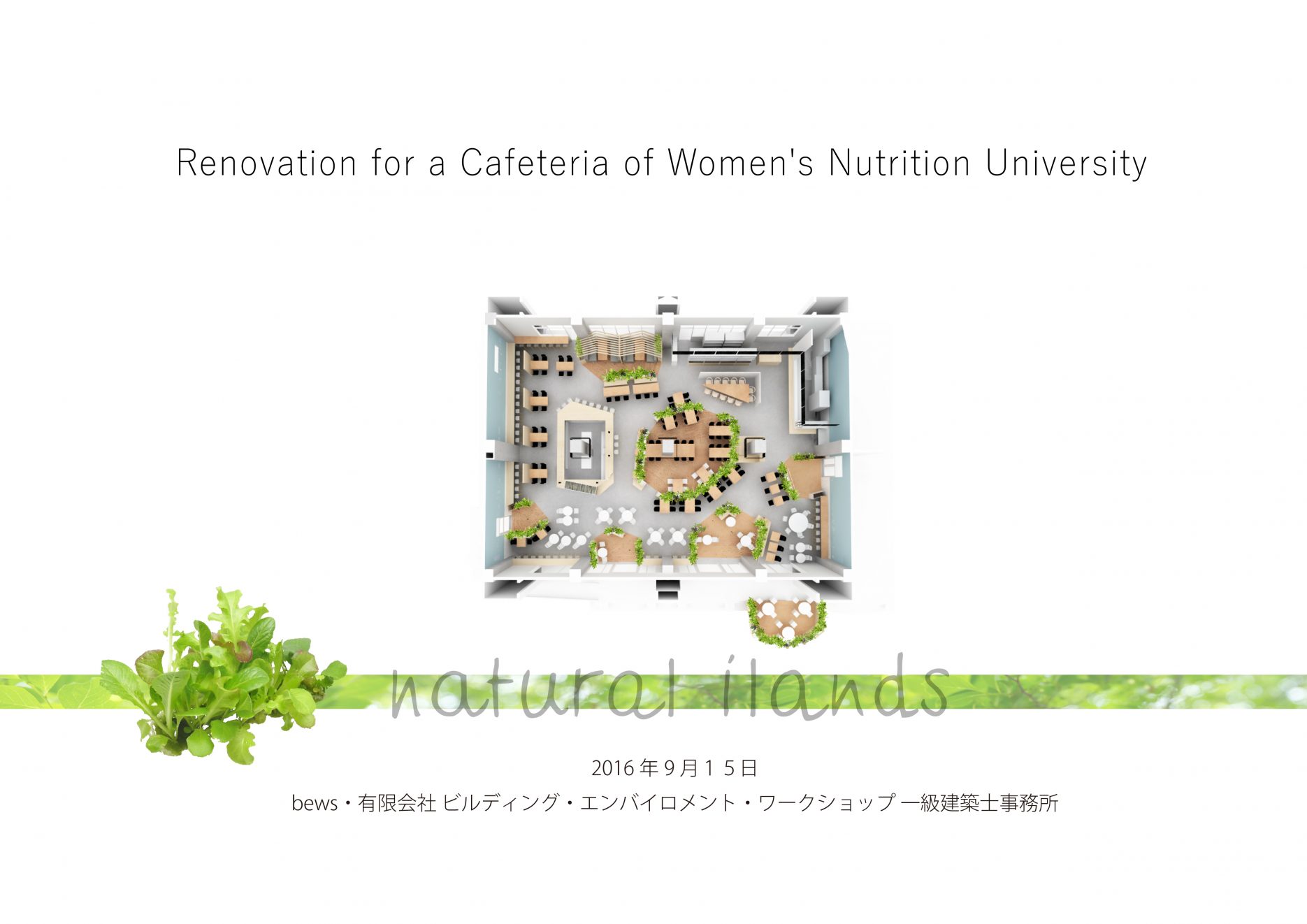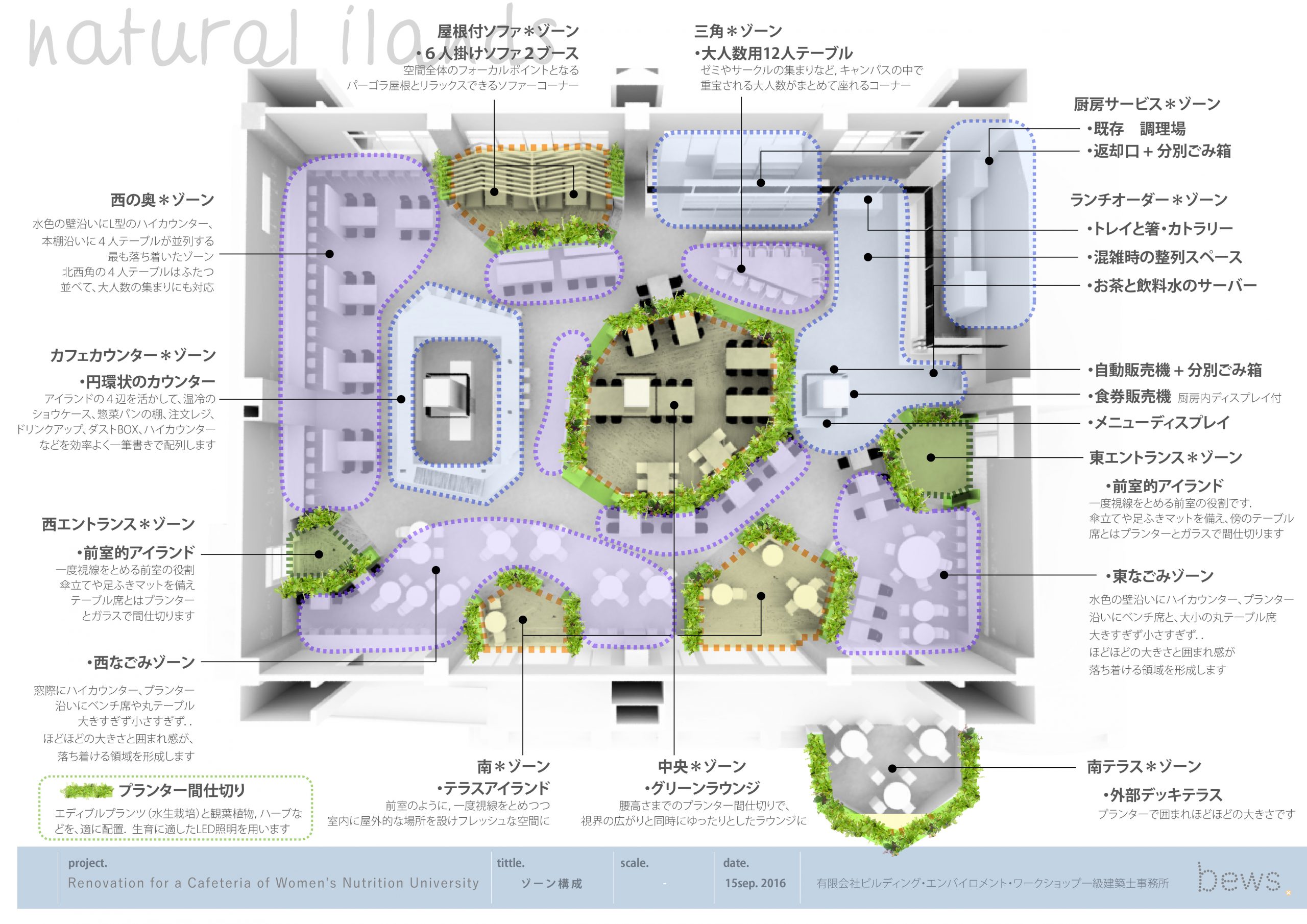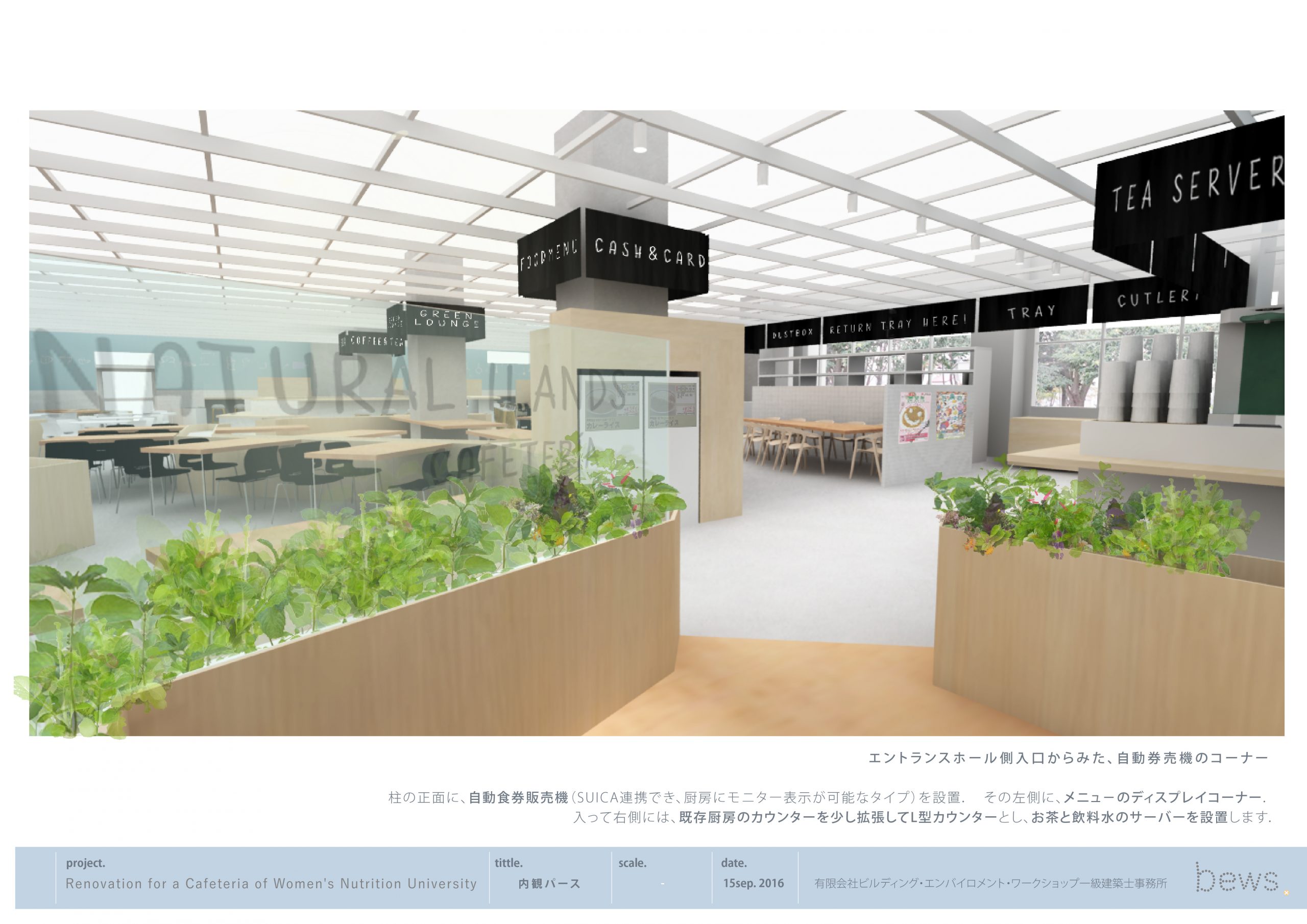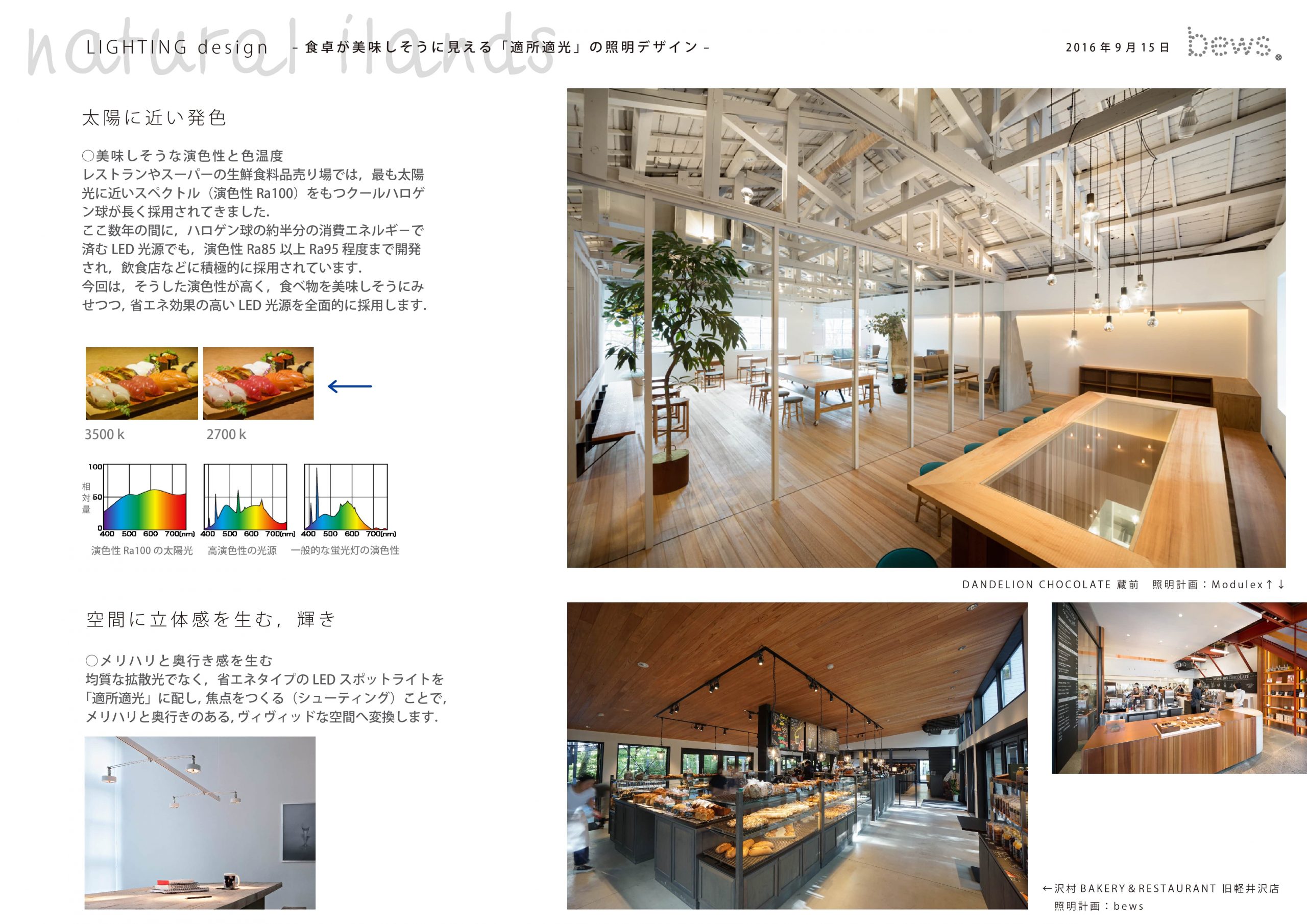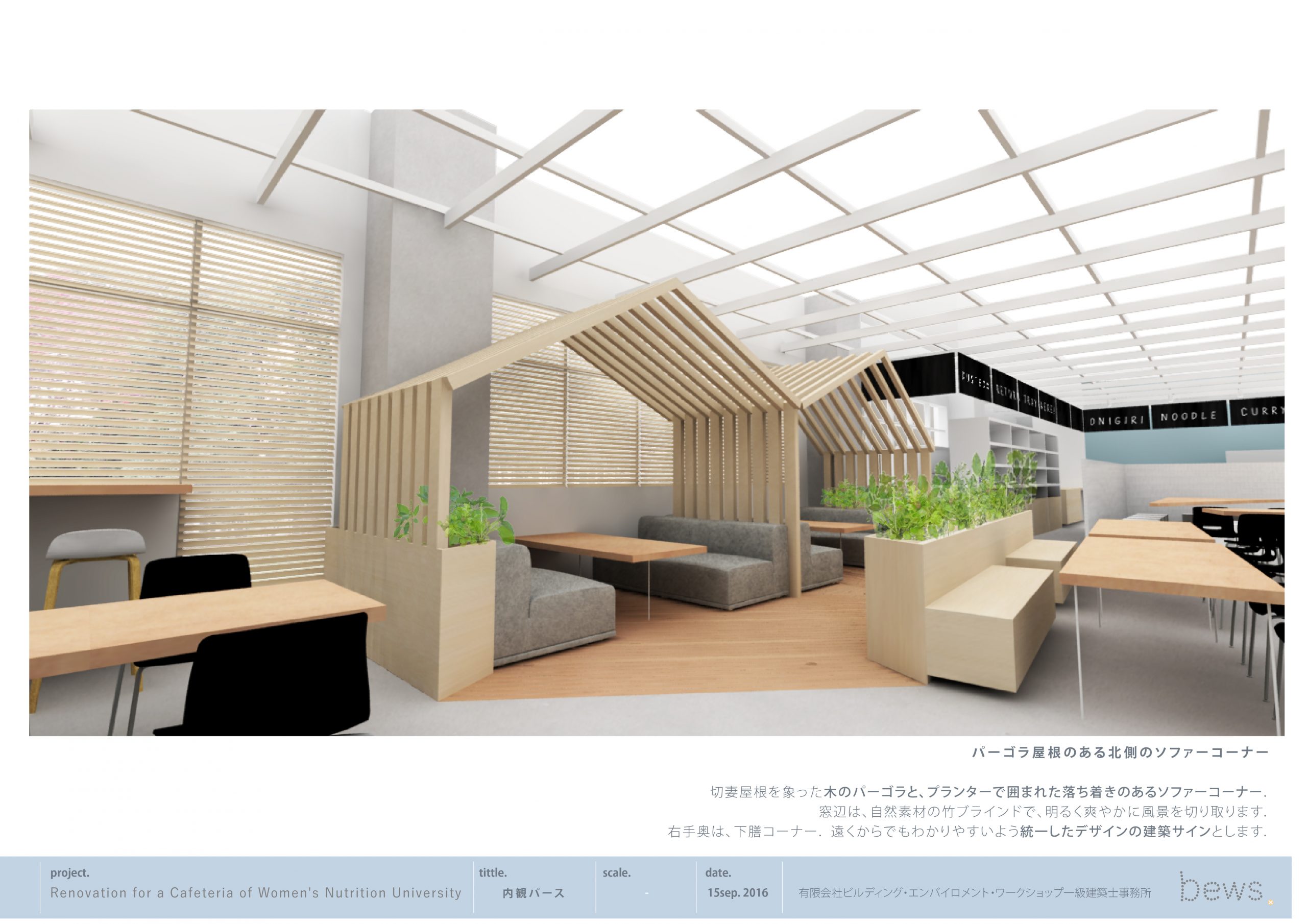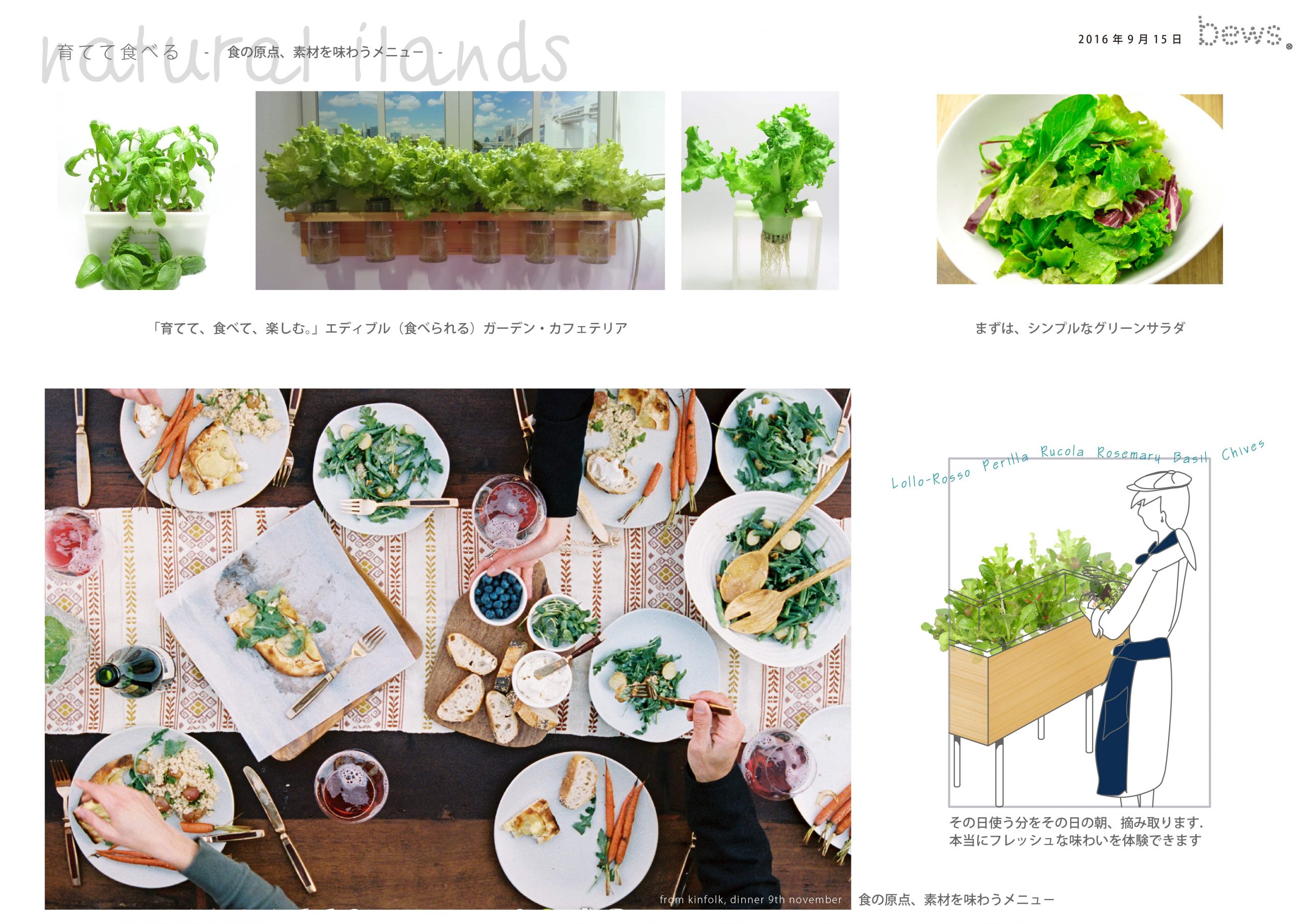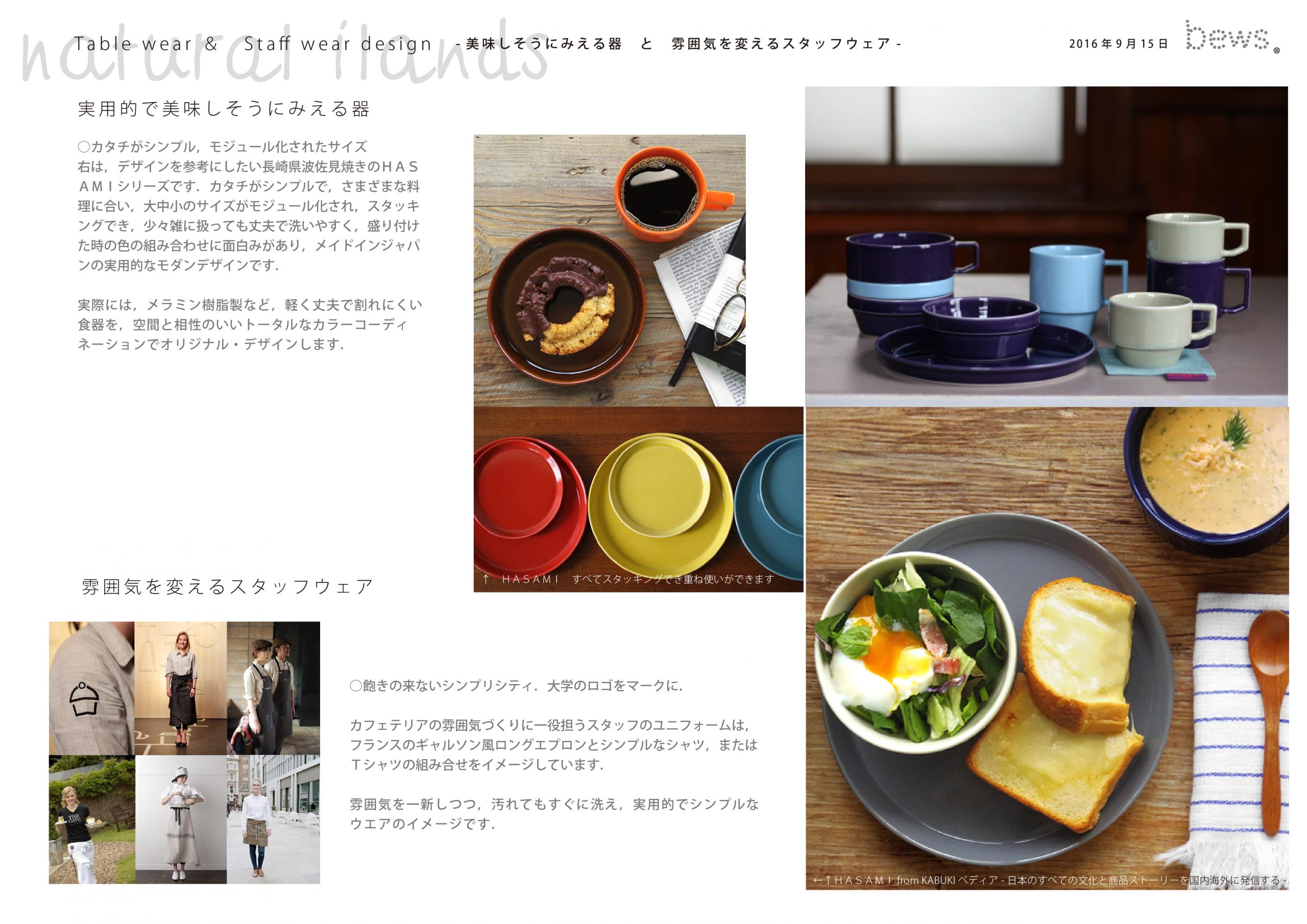某栄養大学キャンパス学生カフェテリア改修プラン
敷地:埼玉県
既存構造:SRC 造の1階部分
リノベーション範囲:530 sqm
2016
“豊かな食文化の始まり”をテーマにした学生カフェテリア改修プラン
埼玉の郊外にある緑豊かな某栄養大学キャンパスの1 階部分,学生カフェテリアのリノベーションです.
対象地は,栄養学の草分けとしての伝統がある大学で,その埼玉キャンパスに位置します.既存は,メインの学生食堂に隣接した,軽食向けの厨房とただ椅子が並ぶだけの少し殺風景な学生ラウンジでした.
将来,国内外の豊かな食文化の一端を担うであろう若い学生たちが,英気を養い食にまつわる教養を身に着けるきっかけになるよう,栄養大学ならではの全く新しいカフェテリアをイメージしました.全体は,独立柱を取り込んで点在するアイランド型プランで,その周囲を滞留と動線を腰高さのエディブルプランターで区画しました.
具体的には,アイランドの中は落ち着く場所,その周りには食べられる水生栽培プランターBOX を介して,外側にはさまざまな過ごし方ができるカウンター,やテラス家具を,有機的にバランスさせつつ配しています.アイランド内外のメリハリによって,ふたつのコア(軽食&麺類,ベーカリー&カフェ)を中心に,注文から配膳,下膳まで,学生が集中するランチ時のスムーズな流れも,同時に成立させています.
計量スプーンを発明した栄養学者を祖とする学園にちなみ,東西に並ぶカウンター前の大きな壁面には,東西のさまざまな調理道具のイラストをグラフィカルに表現し,時空を超えた食文化を伝えています.
Renovation for a cafeteria of Women’s Nutrition University
Location : Saitama city, Japan
Existing Structure : SRC construction
Renovation Range : 530 sqm
2016
Student cafeteria renovation plan on the theme of “place of learning of various food culture”
Renovation of the student cafeteria on the first floor of a nutrition university campus in the
suburbs of lush Saitama. The site is a university with a tradition as a pioneer in nutrition,and is located on the Saitama campus.The existing one was a student lounge that was just lined with chairs, with a kitchen for snacks, adjacent to the main dining room.
A place where young students who will play a part in a rich food culture in and out of Japan in the future will cultivate the spirit of the world and acquire the culture related to food. Such an image of a completely new cafeteria unique to Nutrition University.The whole plan is an island arrangement that incorporates independent columns, and the table seats and flow lines are divided by edible planters about 1 m high around it.The movement and calmness of the islands inside and outside has created a smooth flow at lunch time that is used by many students, from ordering to serving,centered on the two cores (snacks & noodles, bakery & cafe).
Following the academy of nutritionists who invented the measuring spoon, on the two large walls of the east and west, illustrations of various cooking tools from the East and the West were graphically represented to design a food culture that transcends time and space.
